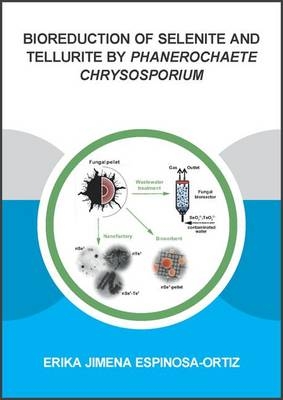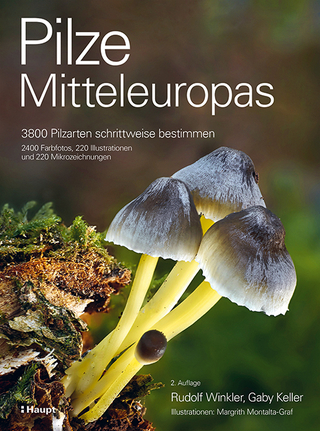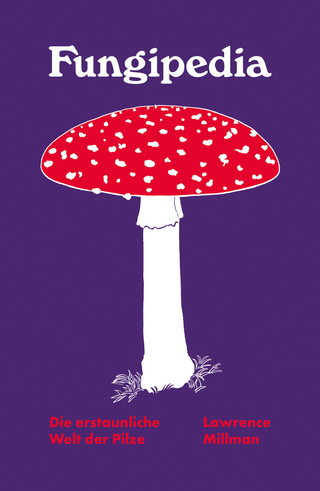
Bioreduction of Selenite and Tellurite by Phanerochaete Chrysosporium
CRC Press (Verlag)
978-1-138-03004-6 (ISBN)
Selenium (Se) and tellurium (Te) are metalloids of commercial interest due to their physicochemical properties. The water soluble oxyanions of these elements (selenite, selenate, tellurite and tellurate) exhibit high toxicities; hence, their release in the environment is of great concern.
This study demonstrates the potential use of fungi as Se- and Te-reducing organisms. The response of Phanerochaete chrysosporium to the presence of selenite and tellurite was evaluated, as well as its potential application in wastewater treatment and production of nanoparticles. Growth stress and morphological changes were induced in P. chrysosoporium when exposed to selenite and tellurite. Synthesis of Se0 and Te0 nanoparticles entrapped in the fungal biomass was observed, as well as the formation of unique Se0-Te0 nanocomposites when the fungus was cultivated concurrently with Se and Te. The response of P. chrysosporium to selenite exposure was investigated in different modes of fungal growth (pellets and biofilm). A bioprocess for selenite removal and Se0 nanoparticles recovery using an up-flow fungal pelleted reactor was developed. 70% selenite removal (10 mg Se L-1 d-1) was achieved under continuous mode. The use of Se0 nanoparticles immobilized in P. chrysosporium pellets as a new sorbent material for the removal of heavy metals from wastewater was demonstrated.
Erika Jimena Espinosa-Ortiz was born in Mexico City in 1984. She received her Bachelor's Science degree, summa cum laude, in Environmental Engineering from the Autonomous Metropolitan University (UAM), Mexico, in 2006. Upon graduation, she worked for one year as environmental consultant, analyst and laboratory assistant in the Water Quality and Residues Laboratory at UAM. Erika obtained two Master degrees. The first one in Environmental Engineering, from the National Autonomous University of Mexico (UNAM) in 2009; during this period she investigated the biological contamination of source water supplies in the Tula Valley, Mexico, which is a region that has been irrigated with wastewater for over a hundred years. She was awarded with a Fulbright scholarship to complete the second Master, which she obtained from Purdue University, USA, in 2010 in Ecological Sciences and Engineering. Her research back then consisted on assessing the ecotoxicological effects of gallium and indium on soil microbial activities and plants. In 2012, Erika started her PhD programme at UNESCO-IHE, as part of an Erasmus Mundus Joint Doctorate Program on Environmental Technologies for Contaminated Solids, Soils and Sediments (ETeCoS3). Erika investigated the of the use of fungi as selenium and tellurium reducing organisms and their potential in wastewater treatment and nanotechnology. As part of her programme, Erika also performed research at Paris-Est University and at the Center for Biofilm Engineering in Bozeman, Montana, USA. She has nine years of laboratory experience and research-related work, participated in international conferences and has a number of scientific publications including a book chapter and peer-reviewed journals on her name. Currently, she works as a post-doc at the Center for Biofilm Engineering on the development of fungal biofilms (2016).
1. General introduction
2. Literature review
3. Effects of selenium oxyanions on the white-rot fungus P. chrysosporium
4. Removal of selenite from wastewater in a P. chrysosporium pellet based fungal bioreactor
5. Sorption of zinc onto elemental selenium nanoparticles immobilized in P. chrysosporium pellets
6. Morphological and inhibitory effects of selenite on biofilms of P. chrysosporium
7. Biomineralization of tellurium and selenium-tellurium nanoparticles by the P. chrysosporium
8. Mycotechnology for the treatment of Se and Te contaminated effluents and biomineralization of Se and Te nanoparticles
| Erscheinungsdatum | 21.12.2016 |
|---|---|
| Reihe/Serie | IHE Delft PhD Thesis Series |
| Verlagsort | London |
| Sprache | englisch |
| Maße | 170 x 240 mm |
| Gewicht | 317 g |
| Themenwelt | Naturwissenschaften ► Biologie ► Mykologie |
| Technik ► Umwelttechnik / Biotechnologie | |
| ISBN-10 | 1-138-03004-X / 113803004X |
| ISBN-13 | 978-1-138-03004-6 / 9781138030046 |
| Zustand | Neuware |
| Haben Sie eine Frage zum Produkt? |
aus dem Bereich


